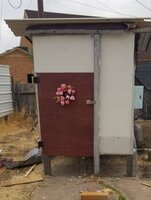Northern Flights
Songster
With any wood product, it's all about sealing it. If you want permanent, use stone, otherwise seal the fibres with an epoxy/composite of some type and enjoy. OSB is better than most because it already contains a waterproof polymer at manufacture. Plywood isn't as durable.
And to those that claim it will not absorb stain, try it before trashing it. I'm sorry for being so blunt, but I bristle at being accused of exagerating. At least when I'm not trying...
And to those that claim it will not absorb stain, try it before trashing it. I'm sorry for being so blunt, but I bristle at being accused of exagerating. At least when I'm not trying...
Last edited:





 Full grown chickens??
Full grown chickens??